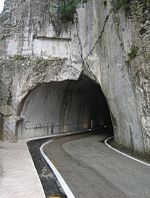The University of Urbino Carlo Bo (Italian: Università degli Studi di Urbino Carlo Bo, UniUrb) is an Italian university located in Urbino, a walled hill-town in the region of Marche, located in the north-eastern part of central Italy. The University was founded as Law school in 1506 by Guidobaldo da Montefeltro, Duke of Urbino, with the name of "Collegio dei Dottori" ("school of doctors", while in Italy doctor was - and is - a title attributed to anyone with a master's degree).
Starting from the 1960s/70s, under the guidance of Carlo Bo as Rector and in the following years, the University succeeded in buying up numerous derelict buildings in the historic centre of the town (now a UNESCO World Heritage Site), there buildings which have since been restored and used as faculty, department and library buildings. While the student body and faculties gradually increased and developed over time, it was under the long-lasting rectorship of professor Carlo Bo, distinguished humanist and Senator for Life, that the University enjoyed unprecedented growth in size and prestige, prompting the former president of the European Commission, Roy Jenkins, to state that "the University of Urbino is an incisive presence in contemporary thought, contributing in original ways to the cultural and intellectual life of Europe". This was also the period in which architect Giancarlo De Carlo designed and built the University Halls of Residence and redesigned and modernised several of the university's other buildings.
The University of Urbino currently has six departments and two institutes, over 14,000 students, many of whom are from overseas, about 800 teachers and 400 administrative staff members. Like already explained, the University occupies numerous buildings throughout the historic town centre of Urbino, which is a UNESCO World Heritage Site as whole, and this its de facto Campus. The University also occupies buildings in the close countryside. The main accommodation blocks are situated at a quite short distance from the historic town center.
Urbino has been a centre for culture and studies since the age of Federico da Montefeltro. The Law school was founded in 1506. Nowadays the University of Urbino is also renowned for teaching and research in Sports Science, Humanities, Biology and Computer science, and for the good reputation of its courses.










